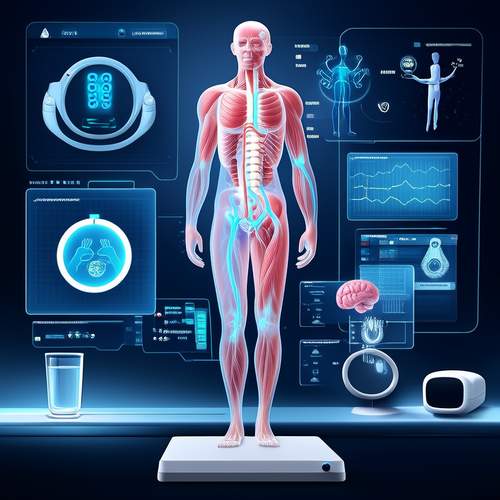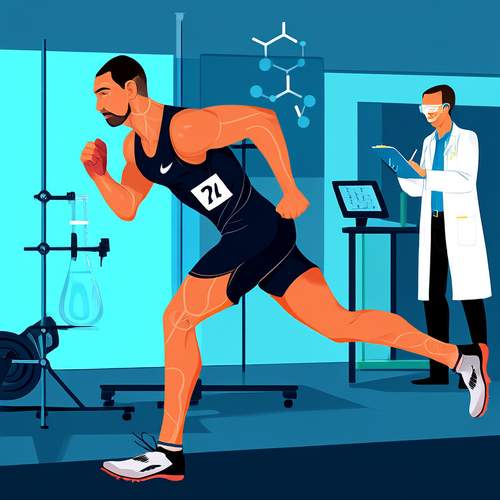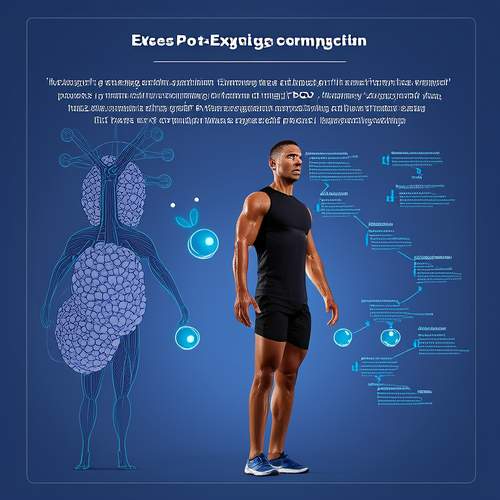Exercise physiology has long been fascinated by the phenomenon known as Excess Post-Exercise Oxygen Consumption, or EPOC. Often referred to as the "afterburn effect," this process describes the body's continued consumption of oxygen at an elevated rate following physical activity. While the concept might sound straightforward, the underlying mechanisms and implications are anything but simple. Researchers have spent decades unraveling the complexities of EPOC, and what they've discovered challenges many traditional assumptions about calorie expenditure and metabolic recovery.
The human body operates like a finely tuned machine, constantly adjusting its energy demands based on activity levels. During exercise, oxygen consumption increases dramatically to meet the heightened energy requirements. What's remarkable is that this elevated oxygen uptake doesn't immediately return to baseline when the workout ends. Instead, the body enters a recovery phase where oxygen consumption remains elevated, sometimes for hours. This prolonged oxygen debt serves multiple physiological purposes that extend far beyond mere recovery.
Understanding the magnitude and duration of EPOC requires examining the intensity and duration of the preceding exercise. High-intensity interval training (HIIT) has been shown to produce particularly significant EPOC effects compared to steady-state cardio. The explanation lies in the substantial metabolic disturbance caused by intense bursts of activity. The body must work harder to restore homeostasis, replenish energy stores, and repair tissue damage - all processes that demand additional oxygen. This explains why brief but intense workouts can sometimes yield greater overall calorie expenditure than longer, moderate sessions when accounting for the extended EPOC period.
The biochemical processes driving EPOC are numerous and interrelated. One major component involves replenishing adenosine triphosphate (ATP) and phosphocreatine stores in muscle tissue. These high-energy compounds get depleted during exercise and require oxygen for their resynthesis. Another significant factor is lactate clearance - the conversion of accumulated lactate back into glucose through gluconeogenesis in the liver. This energy-intensive process contributes substantially to the oxygen debt. Additionally, elevated body temperature persists post-exercise, and the metabolic cost of thermoregulation adds to EPOC. Core temperature remains above normal for some time, and the body continues burning calories at an increased rate to restore thermal equilibrium.
Hormonal fluctuations also play a crucial role in prolonging EPOC. Exercise stimulates the release of catecholamines (epinephrine and norepinephrine) and other hormones that elevate metabolic rate. These biochemical messengers remain active in the bloodstream well after exercise cessation, continuing to stimulate lipolysis and glycogenolysis. The magnitude of this hormonal response correlates with exercise intensity, which helps explain why vigorous activity creates a more pronounced EPOC effect. Furthermore, the repair of exercise-induced muscle damage triggers inflammatory responses and protein turnover, both of which are energetically costly processes that contribute to prolonged oxygen consumption.
Recent research has shed new light on the potential weight management implications of EPOC. While early estimates may have overinflated its caloric contribution, contemporary studies suggest EPOC can account for anywhere from 6-15% of the total energy expended during an exercise session. For someone burning 500 calories in a workout, this translates to an additional 30-75 calories burned during recovery. Though these numbers might seem modest, they accumulate significantly over time, especially for individuals who train regularly at high intensities. This metabolic boost can provide an edge in weight maintenance and body composition improvement when combined with proper nutrition.
The practical applications of EPOC knowledge are transforming modern exercise programming. Personal trainers and sports scientists increasingly incorporate high-intensity protocols specifically designed to maximize the afterburn effect. These regimens often combine resistance training with cardiovascular elements, creating the metabolic disturbance needed for substantial EPOC. However, programming must balance intensity with recovery needs, as excessive high-intensity training without adequate rest can lead to overtraining syndrome. The art of program design lies in finding the sweet spot that optimizes EPOC without compromising recovery or performance.
Emerging evidence suggests that individual characteristics significantly influence EPOC magnitude. Factors such as training status, body composition, age, and genetics all contribute to variations in post-exercise metabolism. Well-trained athletes typically experience a shorter EPOC duration than untrained individuals performing the same exercise, as their bodies have adapted to more efficient recovery processes. Conversely, individuals with greater muscle mass tend to have higher absolute EPOC values due to increased metabolic demand. These individual differences highlight the importance of personalized exercise prescriptions rather than one-size-fits-all approaches.
As research methodologies become more sophisticated, scientists continue refining our understanding of EPOC's complexities. Advanced techniques like indirect calorimetry and stable isotope tracers allow for more precise measurement of post-exercise metabolism than ever before. Future investigations may reveal novel aspects of EPOC, potentially leading to breakthroughs in metabolic conditioning and obesity prevention. What remains clear is that the body's metabolic response to exercise extends far beyond the workout itself, and harnessing this afterburn effect could hold keys to more effective fitness strategies.
The study of EPOC reminds us that human physiology operates on extended timelines that often defy our segmented workout schedules. The body doesn't recognize the arbitrary boundaries we place around exercise sessions; it responds holistically to the stressors we impose. This perspective encourages a more comprehensive view of fitness programming - one that considers not just the immediate workout effects but the prolonged metabolic ripple effects that follow. As our understanding deepens, we may discover even more sophisticated ways to optimize this natural physiological phenomenon for health and performance benefits.

By /May 21, 2025

By /May 21, 2025

By /May 21, 2025

By /May 21, 2025

By /May 21, 2025

By /May 21, 2025

By /May 21, 2025

By /May 21, 2025

By /May 21, 2025

By /May 21, 2025

By /May 21, 2025

By /May 21, 2025

By /May 21, 2025

By /May 21, 2025

By /May 21, 2025

By /May 21, 2025

By /May 21, 2025

By /May 21, 2025

By /May 21, 2025

By /May 21, 2025